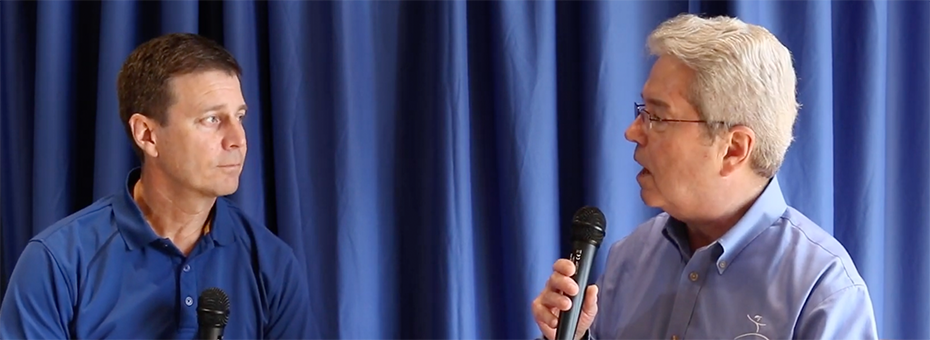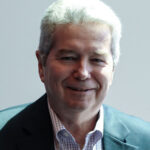When Steve Shoemaker was general manager at Caterpillar Inc., he first applied lean product and process development (LPPD) practices as the chief engineer on a new platform of next-generation hydraulic excavators, overseeing the new product from concept to production. Based in Japan, he was responsible for the company’s Hydraulic Excavator Design Center, including the global team in China, Germany, and the U.S.
Steve is now applying what he learned as head of engineering at Caterpillar’s Earth Moving Division. He shared his insights on applying LPPD principles, sustaining them, and leading teams of engineers with LEI Communications Director Chet Marchwinski at Designing the Future Summit 2019.
Q: Why did Caterpillar adopt lean product and process development, and what were the benefits of LPPD to a global company like Caterpillar?
Steve: We started adopting lean principles in our factories about 30 years ago. So, we’ve been employing those techniques, from a factory perspective, for some time. Then, in the mid-2000s, we faced some significant emission regulations that impacted all of our products. And that meant that we had to redesign all our equipment.
We had some massive changes to our exhaust systems that would help us comply with the new emission regulations. So, it was a crisis from a product development perspective that drove us into lean product and process development. Across the whole enterprise, engine people and machine people came together for what we called blitzes to develop common solutions that we could apply to multiple machines. That was when we really jumped into lean product and process development, and it has been ongoing ever since. There have certainly been many areas where we’ve fallen back, but there are still pockets of excellence moving forward with the principles.
Q: After you started lean product and process development, how did you sustain and spread it? Any tips there?
Steve: You can’t force it on folks, and it’s always easier to fall back into old ways of doing things if people don’t see the benefits immediately. We have a small core group, our lean office, that’s responsible for product development and lean applications. They’re [available] on a pull basis. So the groups that want to do value-stream mapping, for example, or need assistance, pull on them on an as-needed basis. They come and move the team along, and it’s been quite effective.
Q: You were the chief engineer for the excavator portfolio from 2012 to 2017, and now you have chief engineers reporting to you. What’s your advice to other executives who lead teams of chief engineers
At Caterpillar, the chief engineer is the top technical person on a particular product. And, in the Earthmoving Division, we’ve got the paving products — bulldozers, motor graders, medium wheel loaders, and a wheel loader business that we run out of China. Those machines are the heart of the Caterpillar business, growing it over the years. So, these chief engineers have been through a lot. And there’s not a lot of lessons that a leader’s going to come in and teach these folks about how to do product development, but there are a few things that I’d recommend.
One is to listen to them. They know their products, they know what needs to be done on a product, and they know when the new content of a program is too much or not enough. They know where they can push and where the risks are.
The second thing — and it’s something that I work hard to do — is I try to make their jobs easier; let them focus on bringing value to the factory and the products that we send to our customers. I try to get rid of all the other bureaucracy that gets in the way of them doing their jobs and letting them focus on that every day. One of the most important elements of that focus is growing new engineers, helping teach and develop our engineering base so that we’ve got people who can fill the shoes someday.
And then, finally, I’d say you have to appreciate them. They’re the workhorses of the organization; they come to work every day, and they do their jobs every day, day in and day out. And sometimes we forget to tell them how much they mean to the company. So, just showing your appreciation for how much value they add is, I think, really an important key.
Q: That’s great advice. Final question: You were based in Japan as head of the company’s hydraulic excavator design center, a global team with offices in China, Germany, and the U.S. How do you introduce lean development concepts to such an international group? What are the special challenges of an executive leading a team like that?
Steve: My time with the excavation division was a unique period. We hadn’t developed a new platform for our excavators in over 25 years. And it was during my time there that we moved into a new product development program called Next Gen Excavator. And that afforded us the opportunity to employ modularity and commonality as we drove from multiple platforms to a single global platform. So, it really focused us on simplifying our business and united the teams for a common goal — a common purpose — and a reason for what we were doing. And that helped us focus on simplifying the business.
Editor’s Note: This Lean Post is an updated version of an article published on November 20, 2019.







Is there a transcript or video?
Mike Weekes
828 378 4090
Hi Michael,
I’m afraid I don’t understand your question. The video is embedded in the Post; it’s the image w/ the red box in the middle of it. And the copy beneath the video image is a lightly edited transcript of the conversation recorded in the video.
Does that help?
With best regards,
Patricia Panchak, Editor, LEI